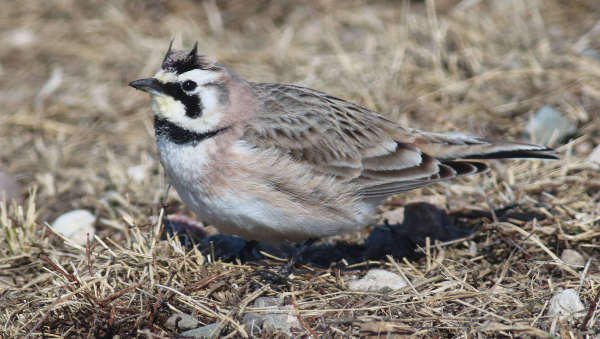
A modern Horned Lark photographed in the Great Plains is not very different from its long-frozen Siberian counterpart.
|
A small bird that died during the last Ice Age laid frozen in time for 46,000 years before it was found in Siberia permafrost by two Russian men searching for fossil mammoth tusks. The bird was in such good shape, it looked “like it died just a few days ago,” explained Dr. Love Dalén, professor of evolutionary genetics at the Centre for Palaeogenetics in Stockholm, Sweden, who was accompanying the ivory hunters, Boris Berezhnov and Spartak Khabrov, when they discovered the frozen bird.
“[The bird] is in pristine condition,” Dalén wrote recently. The find is extraordinary because “small animals like this would normally disintegrate very quickly after death due to scavengers and microbial activity.” The frozen lark is a one-of-a-kind find too: It’s the only near-intact bird carcass documented from the last Ice Age.
When the fossil hunters first uncovered the bird in September 2018, Dalén and his colleagues had no idea of the mystery bird’s age, sex, or species. So, Dalén “collected a couple of feathers and a small piece of tissue for radiocarbon dating and DNA sequencing,” he noted. Dalén brought the Ice Age samples to his lab, where postdoctoral researcher Nicolas Dussex, the lead author of a new study of the bird, analyzed the remains.
The results revealed that the Ice Age bird was a female Horned Lark! Radiocarbon dating revealed that the bird lived during the same time as other Ice Age beasts, including mammoths, woolly rhinos, ancient bison, and horse species.
To view photos of the 46,000 year old specimen of a Horned Lark and review the original article that contains additional information, refer to https://www.livescience.com/topics/birds